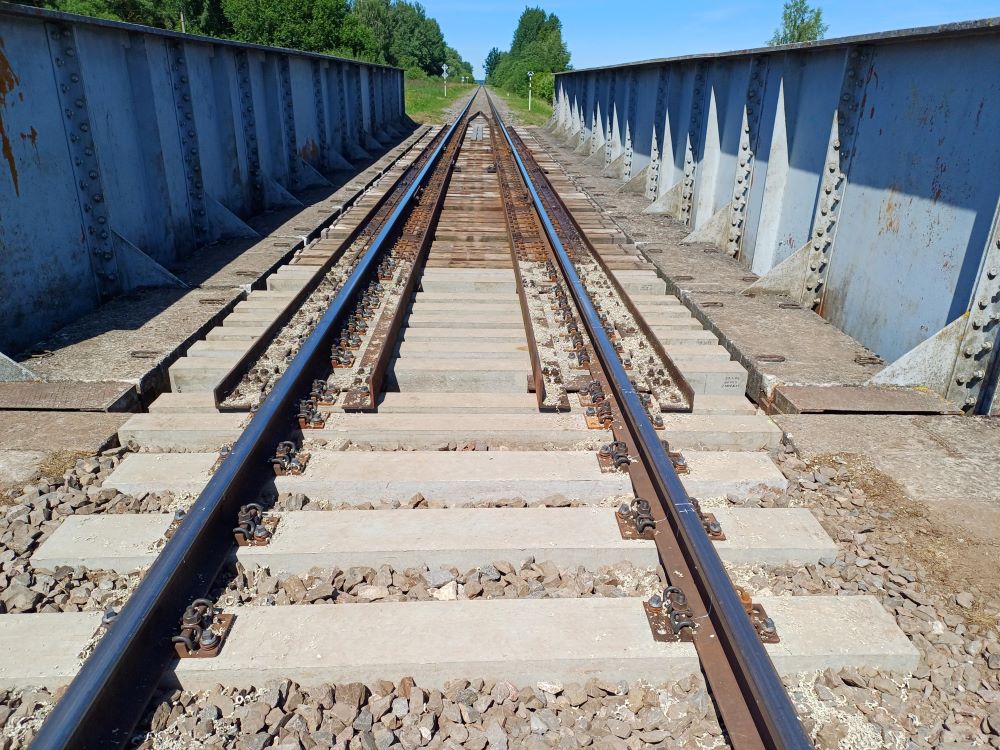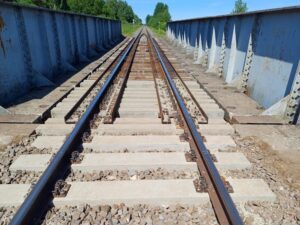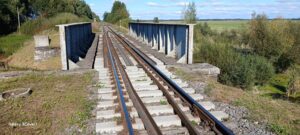LTG Infra takes another step towards sustainable infrastructure by with the successful completion of composite sleeper testing
LTG Infra, a member of the LTG Group, and with the LTG Technical Development team, has successfully implemented a twelve-month pilot project testing composite sleepers manufactured in Germany for use in railway infrastructure. The test results confirmed that the sleepers used met the manufacturer‘s declared technical parameters, and no negative impact on the structure of the bridge where these innovative solutions were installed was found.
"These results confirm that sustainable solutions can be environmentally friendly and technically reliable. This is an important step towards modernizing our infrastructure and achieving long-term value in the future for the entire railway system in the future," says Vytis Žalimas, Head of LTG Infra.
A metal bridge located on the Joniškis–Latvian border section was chosen for the pilot project. Ten composite sleepers and bridge beams were installed on the bridge.
The specially designed test program included the continuous monitoring of geometric parameters related to the railway track, its upper part, and bridge structure elements. The results allow us to confidently state that the composite sleepers and bridge bearings tested during the pilot project are suitable for continuous use in railway infrastructure during the planning of modernization or reconstruction works for bridges and railways.
These composite sleepers can be used in structures such as bridges, where heavy reinforced concrete sleepers cannot be used due to their weight and elasticity properties. They were used for the first time in Lithuania. Therefore, it was a valuable opportunity for LTG Group employees to learn about the technical, structural, and operational properties of this new material.
This solution is technologically advanced and complies with Lithuania's circular economy guidelines for 2035. Composite materials made from recycled materials are durable and have a lower carbon footprint. They also contribute to waste reduction, an important step in addressing environmental challenges.



